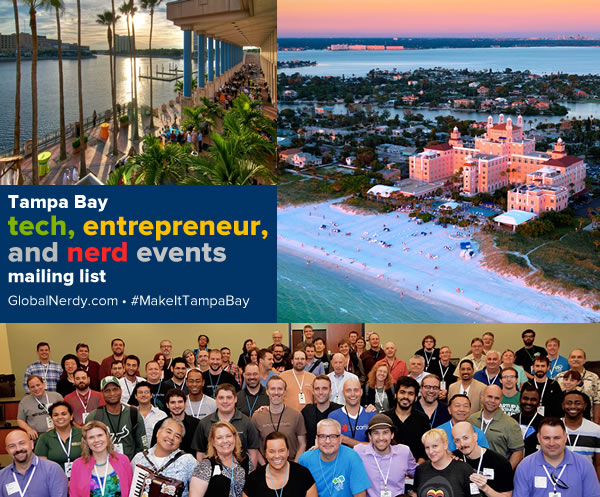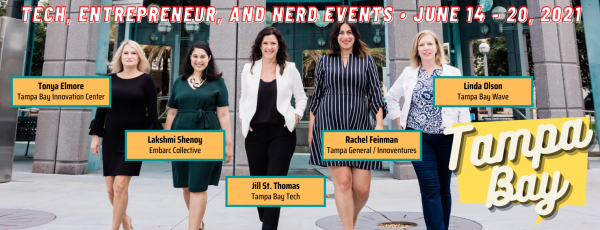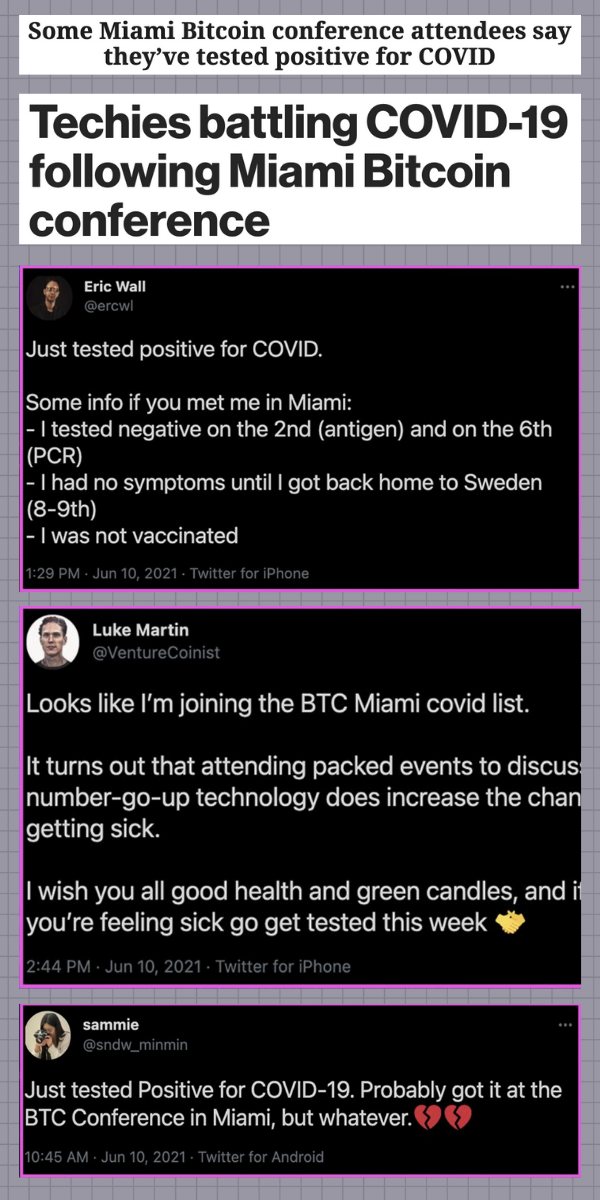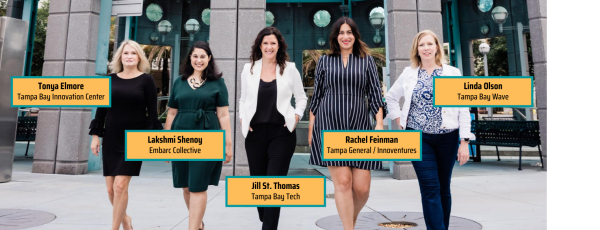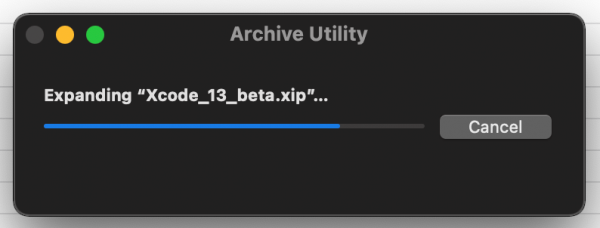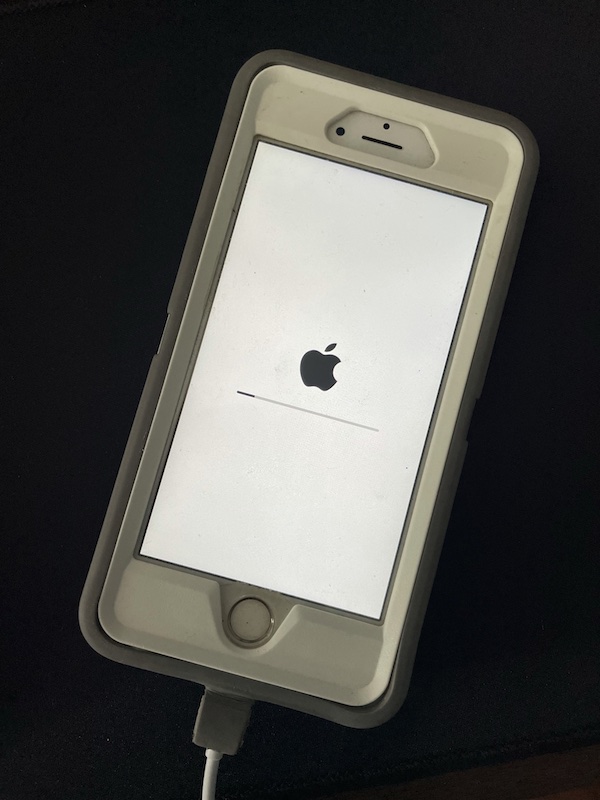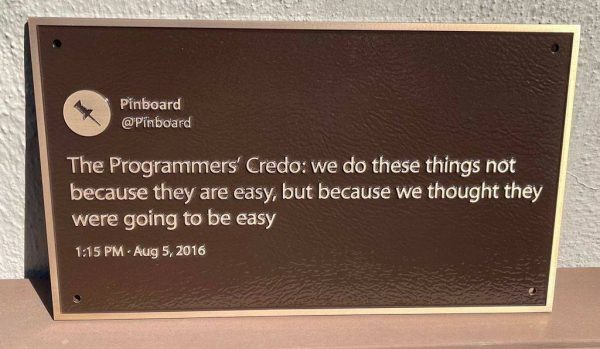
Here’s your list of tech, entrepreneur, and nerd events — plus a little area tech news — for Tampa Bay and surrounding areas for the week of Monday, June 21 through Sunday, June 27, 2021.
This is a weekly service from Tampa Bay’s tech blog, Global Nerdy! For the past four years, I’ve been compiling a list of tech, entrepreneur, and nerd events happening in Tampa Bay and surrounding areas. There’s a lot going on in our scene here in “The Other Bay Area, on the Other West Coast”!
By “Tampa Bay and surrounding areas”, this list covers events that originate or are aimed at the area within 100 miles of the Port of Tampa. At the very least, that includes the cities of Tampa, St. Petersburg, and Clearwater, but as far north as Ocala, as far south as Fort Myers, and includes Orlando and its surrounding cities.
This week’s ONLINE and OUTDOOR events
I’m holding off on listing indoor in-person events for a little longer. In the meantime, enjoy this list of events that are either online or in-person and outdoors!
Monday, June 21
- Entrepreneurs & Business Owners of Sarasota & Bradenton — Virtual Networking Lunch Monday & Wednesday @ 11:30 AM to 1:00 PM EDT
- Coaching for Everyone: Sarasota-Manatee — GSCA June 21st “Virtual” Meeting @ 11:30 AM to 1:00 PM EDT
- Christian Professionals Network Tampa Bay — Live Online Networking- Monday @ 11:30 AM to 12:30 PM EDT
- Wesley Chapel, Trinity, New Tampa Business Professionals — Lutz, Wesley Chapel, New Tampa Virtual Networking Lunch @ 11:30 AM to 1:00 PM EDT
- Network After Work Tampa – Networking Events — The Scale Summit @ Monday 1:00 PM to Friday 1:00 PM EDT
- Learn to play Mah Jongg, The Villages FL — Learn to Play American Mah Jongg @ 2:00 PM to 4:00 PM EDT
- Amtgard of Brandon – Falling Fire — Practice @ 4:00 PM to 6:00 PM EDT
- Orlando Adventurer’s Guild — [Online MASTERS] Book of Cylinders – DM Aaron (Tier 2) @ 6:00 PM to 8:00 PM EDT
- Learn to play Mah Jongg, Orlando FL — Learn to Play American Mah Jongg @ 7:00 PM to 9:00 PM EDT
- Tampa Bay Investors & Traders — Stocktwits Meetups — Winning Wall Street’s Money with Stocks, Options, Futures, Forex, Crypto, etc @ 7:00 PM to 9:00 PM EDT
- Orlando Developers Meetup — ODevs June Virtual Meetup @ 7:00 PM to 9:00 PM EDT
- Orlando Lady Developers Meetup — Study group – Server-side Development with NodeJS, Express and MongoDB @ 7:00 PM to 8:00 PM EDT
- Library Book Clubs – OCLS — Virtual Event: Hiawassee Book Club @ 7:00 PM to 8:00 PM EDT
- Toastmasters District 48 — Come Listen to How Our Members Found Their Voices at Our Open House this Monday! @ 7:00 PM to 8:15 PM EDT
- Orlando Stoics — Marcus Aurelius and “The View from Above” @ 7:00 PM to 8:30 PM EDT
- Nerdbrew Events — Anime Watch Party @ 7:00 PM to 10:00 PM EDT
Tuesday, June 22
- Tampa Bay Agile — v-Lean Coffee @ 7:30 AM to 8:30 AM EDT
- Professional Business Networking with RGAnetwork.net — Tampa Bay Virtual Networking Breakfast Tuesday & Thursday All Welcome JOIN us @ 7:30 AM to 9:00 AM EDT
- Cloud Architects and Engineers Tampa — Best practices for building cloud REST APIs for data @ 10:00 AM to 11:00 AM EDT
- Tampa Bay Tech Career Advice Forum — 12 Things You May Be Doing Wrong in Your Job Search @ 10:00 AM to 11:30 AM EDT
- OK! TRANSMIT Art + Technology Meetups — Art+Tech Meetup No.22: VIRTUAL MEETUP / ARTIST TALKS! @ 10:30 AM to 12:30 PM EDT
- Orlando Unity Developers Group — 🎓Intro to C# for Unity Workshop 👀 @ 11:00 AM to 12:00 PM EDT
- Keystone Mastermind Alliance – KMA Network — ZOOM at NOON – Virtual Meeting @ 12:00 PM to 1:30 PM EDT
- Toastmasters District 48 — Westshore Toastmasters @ 12:00 PM to 1:00 PM EDT
- Tampa Bay Investors & Traders — Stocktwits Meetups — Winning Wall Street’s Money with Stocks, Options, Futures, Forex, Crypto, etc @ 1:00 PM to 3:00 PM EDT
- Learn to play Mah Jongg, The Villages FL — Learn to Play American Mah Jongg @ 2:00 PM to 4:00 PM EDT
- Free Video Production Classes – TV/Internet — Social Video Marketing Tips(ONLINE CLASS)-FREE for Hillsborough County Residents @ 4:15 PM to 5:15 PM EDT
- Blacks In Technology – Tampa Bay — Successful DEI Initiatives in Action @ 4:30 PM to 6:30 PM EDT
- Florida Podcasters Association — Florida Podcasters Association General Meeting!!! @ 6:00 PM to 7:30 PM EDT
- Women Who Code Tampa — How to Rock a Technical Interview @ 6:00 PM to 7:30 PM EDT
- SWFL Data — Data & the Physical World: GIS and More @ 6:00 PM to 7:30 PM EDT
- Network After Work Tampa – Networking Events — Email Marketing Do’s & Don’ts For Achieving Increased Conversions @ 6:00 PM to 7:00 PM EDT
- Central Florida Computer Society — Central Florida Computer Society TechSIG (Please join us!!) @ 7:00 PM to 10:00 PM EDT
- Learn to play Mah Jongg, Orlando FL — Learn to Play American Mah Jongg @ 7:00 PM to 9:00 PM EDT
- The Orlando Python User Group — Flask Deployment (2/2) @ 7:00 PM to 8:30 PM EDT
- Orlando Adventurer’s Guild — [Online SEASONAL] Icewind Dale: Rime of the Frostmaiden – DM Canon (Tier 1) @ 7:00 PM to 11:00 PM EDT
- DOUX — Downtown Orlando UX Meetup — Human-Centric Product Engineering: Why Designers and Developers Should Team Up @ 7:30 PM to 9:00 PM EDT
- Shut Up & Write!® Tampa — Online Event: Shut Up & Write on Zoom @ 7:45 PM to 9:15 PM EDT
- Tampa Entrepreneurs Network — Reach millions with your message – social media secrets revealed | Tracy Repchuk @ 8:00 PM to 10:00 PM EDT
Wednesday, June 23
- 1 Million Cups Orlando — HoverKingz / School of Rock & Sand @ 9:00 AM EDT
- 1 Million Cups St. Pete — Good With Me Foundation Inc @ 9:00 AM EDT
- 1 Million Cups Tampa — Ample Health / Stylz N Smilz Kids Mobile Natural Hair Salon @ 9:00 AM EDT
- North Tampa Networking Group — Business networking @ 9:00 AM to 10:00 AM EDT
- Wesley Chapel, Trinity, New Tampa Business Professionals — Lutz, Wesley Chapel, New Tampa Virtual Networking Lunch @ 11:30 AM to 1:00 PM EDT
- Success Strategies for Business Owners — Client Journey: Sales Tools and Metrics June 2021 @ 12:00 PM to 1:00 PM EDT
- Heart of Agile St. Pete – Tampa – Orlando — Heart of Agile Weekly Coffee Corner @ 12:30 PM to 1:45 PM EDT
- Free Video Production Classes – TV/Internet — Digital Video Editing Class (ONLINE CLASS) -FREE for Hillsborough residents only @ 1:00 PM to 3:00 PM EDT
- Learn to play Mah Jongg, The Villages FL — Learn to Play American Mah Jongg @ 2:00 PM to 4:00 PM EDT
- Business Go-Getters (Service-Based Business Owners) — LIVE Q&A About How to Build Your Business @ 3:00 PM to 4:00 PM EDT
- Tampa Bay Business Networking Happy Hour- Meet Up — Virtual Speed Networking Happy Hour! @ 5:00 PM to 7:00 PM EDT
- Around The World: International Book Club – Metrowest — GAZA STRIP/PALESTINE: You Exist Too Much – Zaina Arafat @ 6:00 PM to 8:00 PM EDT
- Tampa Writers Alliance — Tampa Writers Alliance Critique Group @ 6:30 PM to 8:30 PM EDT
- Tampa Bay Inventors Council – www.TampaBayInventors.org — Tampa Bay Inventors Council – www.tbic.us Weekly Meetup @ 6:30 PM to 8:00 PM EDT
- Keystone Mastermind Alliance – KMA Network — Workshop Wednesdays with KMA! @ 7:00 PM to 8:30 PM EDT
- MakerFX Makerspace — Orlando 3D Printing Meetup @ 7:00 PM to 9:00 PM EDT
- Tampa Bay Investors & Traders — Stocktwits Meetups — Winning Wall Street’s Money with Stocks, Options, Futures, Forex, Crypto, etc @ 7:00 PM to 9:00 PM EDT
- Learn to play Mah Jongg, Orlando FL — Learn to Play American Mah Jongg @ 7:00 PM to 9:00 PM EDT
- Central Florida AD&D (1st ed.) Grognards Guild — New Beginnings & Old Rivalries @ 7:00 PM to 10:30 PM EDT
- Toastmasters District 48 — Carrollwood Toastmasters Meetings now conducted Online using Zoom @ 7:00 PM to 8:30 PM EDT
- Orlando Adventurer’s Guild — [Online HISTORIC] DDAL-04 Death House dm Taylor @ 7:00 PM to 9:00 PM EDT
- Tampa Alchemist Nation – Building 100 Millionaires — Mission to Fitness @ 8:00 PM to 9:00 PM EDT
Thursday, June 24
- Tampa Bay Tech Career Advice Forum — HireUP Tampa Bay @ 11:00 AM to 2:00 PM EDT
- Power Business Networking — Power Business Networking Thursday 11:45 am 2021 06 24 @ 11:45 AM to 1:15 PM EDT
- Tampa Bay WaVE — TechWomen Rising Accelerator Program “Ask Me Anything” Session @ 12:00 PM to 1:00 PM EDT
- Pirates of Tampa Bay SOLIDWORKS User Group (POT-SWUG) — Productivity tools: Customize the Way you Work @ 12:00 PM to 1:00 PM EDT
- Tampa Bay Tech — Powered Up Tech Tracks @ 12:00 PM to 5:00 PM EDT
- Divi Tampa — Divi Tampa Jolly-June 2021 @ 1:00 PM to 2:30 PM EDT
- Tampa Bay Investors & Traders — Stocktwits Meetups — Winning Wall Street’s Money with Stocks, Options, Futures, Forex, Crypto, etc @ 1:00 PM to 3:00 PM EDT
- WP Bloggers and Social Media Meetup — Unlocking Your Creative Problem-Solving Skills @ 2:00 PM to 3:00 PM EDT
- StartUp Xchange — Product Discovery Coffee Chat/Monthly Video Conference @ 2:30 PM to 4:00 PM EDT
- Orlando Unity Developers Group — 🎓 Circuit Stream Open House – kickstart your career in XR? 👀 @ 4:00 PM to 5:00 PM EDT
- Library Book Clubs – OCLS — Virtual Event: Winter Garden Book Club @ 6:00 PM to 7:00 PM EDT
- Tampa Bay Women in Agile — Fear Not: What to Do When the World of Work is Scary @ 6:00 PM to 8:00 PM EDT
- Pasco – Hernando IT Business Group — Business and IT @ 6:00 PM to 7:30 PM EDT
- Tampa Bay Technology Center — WordPress @ 7:00 PM to 9:00 PM EDT
- Modern Minimalism — ONLINE: Cal Newport’s book “Digital Minimalism” (Part 2) @ 7:00 PM to 8:30 PM EDT
- Thinkful Tampa | Careers in Tech — Thinkful Webinar | Intro To Data Analytics: Tableau Basics @ 9:30 PM to 11:30 PM EDT
Friday, June 25
- Agile Orlando — Agile in the Morning @ 7:30 AM to 8:30 AM EDT
- Tampa Bay Tech Career Advice Forum — What is DevSecOps with Jeff Fudge @ 10:00 AM to 11:30 AM EDT
- Powerful Women Networking — S Orlando/Dr Phillips: Join us for fun connection growth & networking too! @ 11:30 AM to 1:30 PM EDT
- Tampa Bay Investors & Traders — Stocktwits Meetups — Winning Wall Street’s Money with Stocks, Options, Futures, Forex, Crypto, etc @ 1:00 PM to 3:00 PM EDT
- Orlando Adventurer’s Guild — [Online HISTORIC] Canon’s Custom Campaign Moonsea Tour – DM Canon (Tier 3) @ 7:00 PM to 11:00 PM EDT
- Orlando Stoics — ONLINE: Handbook for New Stoics (Exercise 41) @ 7:00 PM to 8:30 PM EDT
Saturday, June 26
- The Orlando Polymer Clay Meetup Group — OAPCG Monthly Meeting @ 10:00 AM to 1:00 PM EDT
- Fort Myers Community Book Club — Caste: The Origins of Our Discontents – Isabel Wilkerson @ 11:00 AM to 12:00 PM EDT
- The Sarasota Book Club Meetup Group — June Book Club @ 11:30 AM to 1:30 PM EDT
- Tampa Business Owners Group — [webinar] The 5 Top Small Business Online Marketing Tactics @ 1:00 PM to 2:00 PM EDT
- Tampa Bay Investors & Traders — Stocktwits Meetups — Winning Wall Street’s Money with Stocks, Options, Futures, Forex, Crypto, etc @ 1:00 PM to 3:00 PM EDT
- Orlando Machine Learning and Data Science — Multi-language Data Wrangling and Acquisition Conversational Agents @ 3:00 PM to 4:30 PM EDT
- World Of Darkness RPG Meetup — The Secrets of Orlando: The Undead Rat King of Altamonte @ 7:00 PM to 10:00 PM EDT
- Orlando Spaceperium Citadel & Zonal Ships Crew — Spaceperium Game Orientation – Learn About The Game & How To Join The Crew! @ 9:00 PM to 11:00 PM EDT
Sunday, June 27
- SRQ Cloud Computing Meetup — Presto: SQL on Anything & Anywhere @ 2:30 PM to 4:00 PM EDT
- Young Women Book Club — When We Believed in Mermaids by Barbara O’Neal Book Discussion @ 3:00 PM to 5:00 PM EDT
- Orlando Lady Developers Meetup — Volunteer project kickoff – building internet safety tools & training materials @ 3:00 PM to 4:00 PM EDT
- Orlando Stoics — ONLINE: Presentation at Stoic Salon: JUNIUS RUSTICUS @ 5:00 PM to 6:00 PM EDT
- Orlando Adventurer’s Guild — [Online SEASONAL] Rime of the Frostmaiden – DM Ryan (APL 1) @ 8:00 PM to 11:00 PM EDT
Tampa Bay area news
Tampa Bay Tech’s “Tech Tracks 2021” virtual event this Thursday

Tampa Bay Tech is holding Tech Tracks 2021, its big Q2 virtual event on Thursday afternoon. It will feature tech talks provided by Tampa Bay area technologists, for Tampa Bay area technologists. Tickets are $25.00, and are cheaper for Tampa Bay Tech members. Here’s the agenda:
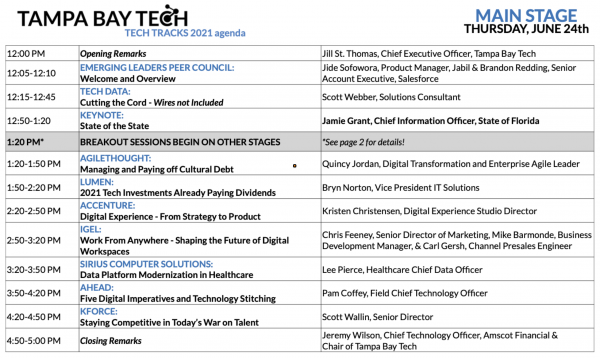
Video: Tampa Bay’s biggest strengths, weakness and opportunities, according to Silicon Valley executives
In this video, Tampa Bay Business Journal’s Lauren Coffey chats with three tech execs on why they moved to Tampa:
Tampa Bay Wave welcomes 15 startups to latest accelerator cohort
From “several hundred” applications, Tampa Bay Wave selected fifteen tech startups from the U.S. and beyond to be admitted to their 2021 TechDiversity Accelerator. Find out more about them here.
7 questions to ask before relocating your startup to Florida
If you’ve got a TechCrunch “Extra Crunch” subscription, you can read the entirely of this article by Embarc Collective’s Lakshmi Shenoy. I don’t have one, so could somebody please tell me what the final 4 questions are?
Do you have any events or announcements that you’d like to see on this list?
Let me know at joey@joeydevilla.com!
Join the mailing list!
If you’d like to get this list in your email inbox every week, enter your email address below. You’ll only be emailed once a week, and the email will contain this list, plus links to any interesting news, upcoming events, and tech articles. Join the Tampa Bay Tech Events list and always be informed of what’s coming up in Tampa Bay!
